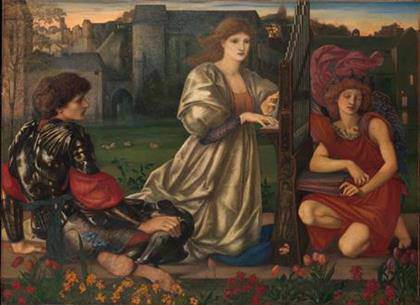
Joan Miró: “The Farm”, 1921-1922
Oil on canvas
National Gallery of Art, Washington. Gift of Mary Hemingway, 1987.18.1.
© Successió Miró 2014/Bildrecht, Vienna, 2014

Joan Miró: “Landscape with Rooster”, 1927
Oil on canvas
Fondation Beyeler, Riehen/Basel
© Successió Miró 2014/Bildrecht, Vienna, 2014
Miró. From earth to sky – Albertina, Vienna Catalan artist Joan Miró is the third of a series of prominent artists connected to Surrealism to become the focus of a comprehensive retrospective exhibition at the Albertina. 12 September 2014 – 11 January 2015.]]>
Source: Albertina, Vienna
Following exhibitions dedicated to René Magritte (2011) and Max Ernst (2013), the Albertina is now hosting an exhibition on Miró, which is part of a programme on artists situated within a broad definition of Surrealism, as represented in the Albertina’s Batliner Collection. With a selection of about 100 works, including paintings, paper works and objects, the exhibition traces the theoretical and technical path of the artist, following his central motto “from earth to sky”.
Over 80 years, the rather calm, taciturn and reclusive artist, who was not particularly interested in social events and gatherings, preferring to devote his entire concentration and energy to his art, created works whose visual charm reveals nothing of the effort he invested in it. The lively, cheerful and striking images and objects, often resplendent with violent shapes and colours, present a contrast to the very different nature and appearance of their creator.
Miró’s life was his art. He combined the earthy and nature-bound – the “Catalan farmer“ – with the thinker, philosopher, seeker and “mystic” . The subject matter of his works often took him to a spiritual, cosmic level. This contrast provided a decisive impulse for his creativity.
Even if Miró’s work is often deemed apolitical due to his restraint and, first and foremost, to frequent comparisons to Pablo Picasso, the well-being of humanity was always of central importance to him; he fought for it in his own way. A yearning for harmony and a view that all living things should be treated with the same respect and love may not necessarily seem like topical political commentary. His goal was not the perseverance of his work, but rather the delivery of a message that would reach a broad spectrum of people.
When Miró allowed his observations of the environment to lead him to a poetic-visionary and universal world of images, reality provided a starting point, but it was never the final destination. Its transformation into a system of colours and shapes was the guiding force behind his creative vision. The imagery in his work is magical. Moons, suns, stars and comets, eyes and insects, birds and women populate his paintings, and the poetic interpretation of his interest in the earth and the cosmos can be read in these images – in the flora and fauna, and not least in mankind and his place within this world. Unlike the Surrealists, Miró did not allow unconscious material to become manifest in his work. His paintings offer private visions of the original essence of things, the world and the universe.
Related content
Joan Miró: ‘The Ladder of Escape’ at Fundació Joan Miró, Barcelona (exhibition, 2011-2012)
Follow us on:


